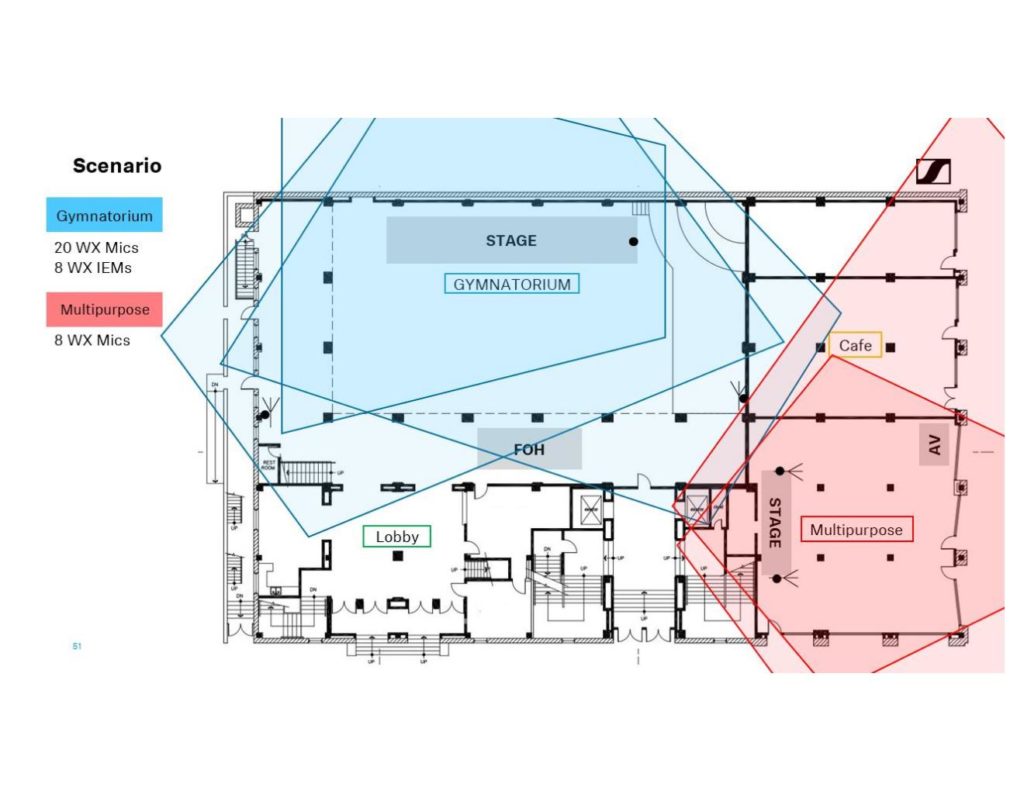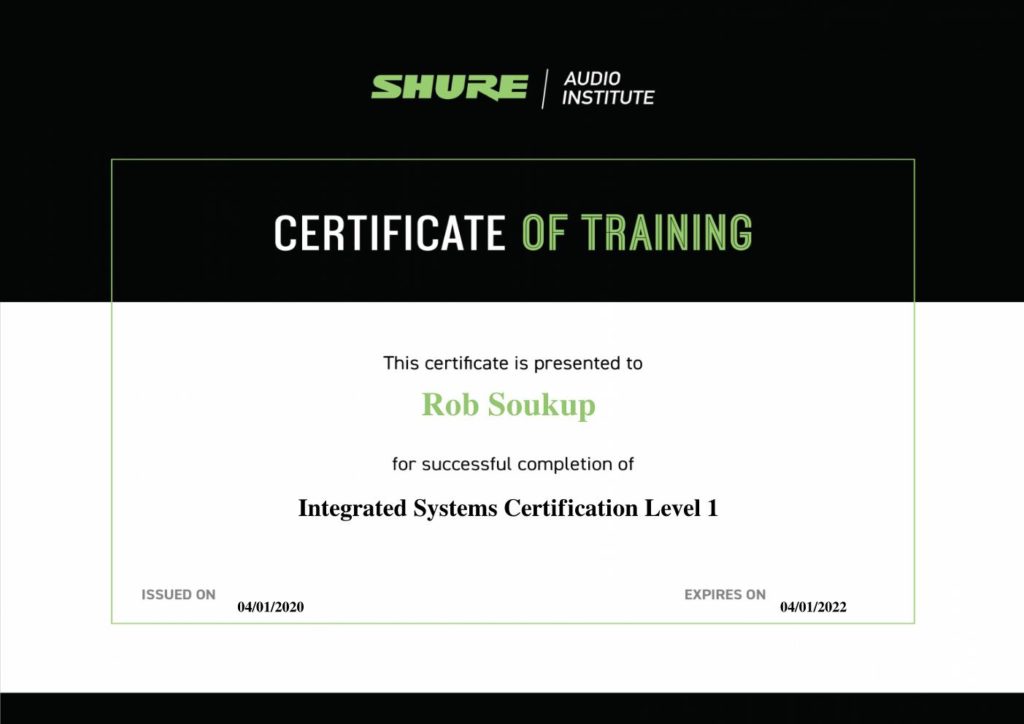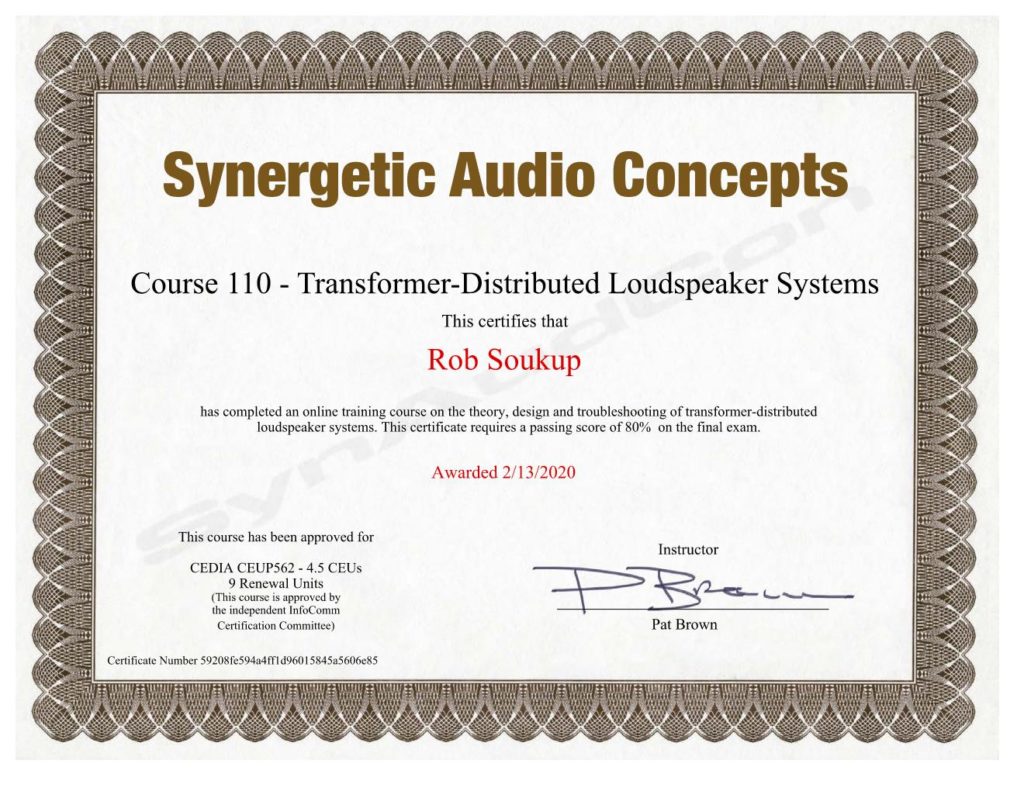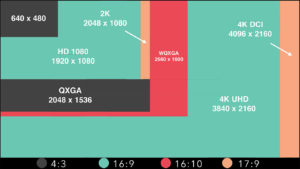This webinar covered the fundamentals of wireless microphone. It was both scientific and practical. Topics were frequency modulation, RF theory, wave inter-modulation, DECT, coordination, antenna distribution and design considerations.


This webinar covered the fundamentals of wireless microphone. It was both scientific and practical. Topics were frequency modulation, RF theory, wave inter-modulation, DECT, coordination, antenna distribution and design considerations.

The second part of Shure certification includes the Dante certification. Fortunately, I’ve already completed this so that saved a day or two. This section was by far the most beneficial as it addressed wireless microphone coordination. This included design of antennas and television auctioning.

This certification required completion of multiple classes which proved to be very helpful in day to day work. Shure once again proved they earned their place as an industry leader. The training did not disappoint in its scope of material and technical depth.

Like the utility company, sound system designers sometimes need to drive lots of loads from a single source, and drive them over very long distances. Both of these obstacles can be overcome with a transformer-distributed loudspeaker system.
If you understand how these systems work, you can effectively design and troubleshoot them. You will learn how transformers are used for signal distribution, including how they affect the applied voltage, current and reflect the connected impedance.
This course will answer questions like:
The last lesson includes scenarios that will walk you through some distributed system design issues.

This in-person training was conducted at Messiah College in Mechanicsburg, Pennsylvania. We took a tour of several spaces such as the Hostetter Chapel, the high-tech Miller Auditorium that featured moving acoustic ceiling panels and wall drapes, several other acoustically engineered spaces and the gym with line array speakers. Pat Brown setup a measure mic coupled with an audio system to demonstrate the principles from the class.
Description
Learning how it works is the key to sound system setup and troubleshooting.
Pat Brown will demonstrate how to measure voltage, impedance, polarity, SPL, and STIPA using audio and acoustic instrumentation. More importantly, he will help you learn what these measurements mean and how to use them to ensure that your system is performing optimally.
Pat will demonstrate an optimized method for equalizing a sound system a method that is efficient, logical, and repeatable. Time is money. Learn how to get it done quickly.
He takes these hard-to-explain topics and uses lecture, analogies, and active demos to get the points across. If you don’t get a concept on the first pass, you will also hear it from a different perspective. Because of this approach, Pat is known to be among the best teachers in the audio industry.
Attend this seminar and look forward to having the satisfaction that your systems are the best they can be.
SynAudCon is the best and most comprehensive audio training in the AV Industry. Pat Brown of Synergetic Audio Concepts, Inc. is a skillful teacher whose knowledge and passion for audio is a gushing fountain. The course held my interest with deep audio concepts that made sense because of Pat’s mastery of the content.
Description
Most sound problems come from overlooking basic fundamentals. We can take many years off of your journey to becoming a competent audio practitioner. Principles of Audio not only presents the theory, it presents it in a logical order, with each topic receiving the proper priority and covered to just the right depth.
Lots of webinars get pumped out by manufacturers which focus more on sales. But this one was technical for the design and field guys who have to make it happen. Thanks Gary Kayye!
This one covered industry standards for resolution, frame rate, chroma sub-sampling, pixel clock and data rate (bandwidth). Each one is a session in its own so this was a nice overview.

The QSC Level 1 Certification expires periodically which requires re-certification. This updated class discussed cameras, software changes, hardware changes, licensing and design concepts to the user interface. Fortunately, I did not have to re-submit another DSP design so that saved a lot of time. Now on my way to the job site to work some audiovisual magic.
This is an online course which I skipped years ago so just now watched all the content. It was encouraging that I already knew most of the material but still needed to do it as an AVI-SPL requirement.
This certification was a two day in-person training from QSC.
Topics include: Public Address, Teleconferencing Suite (Acoustic Echo Cancellation, Softphone, Proper Gain Staging) Third-Party Control, Advanced User Control Design, GPIO Integration, Networking Troubleshooting, and Core-to-Core Control. A graded schematic project was required after the class to achieve the certification.